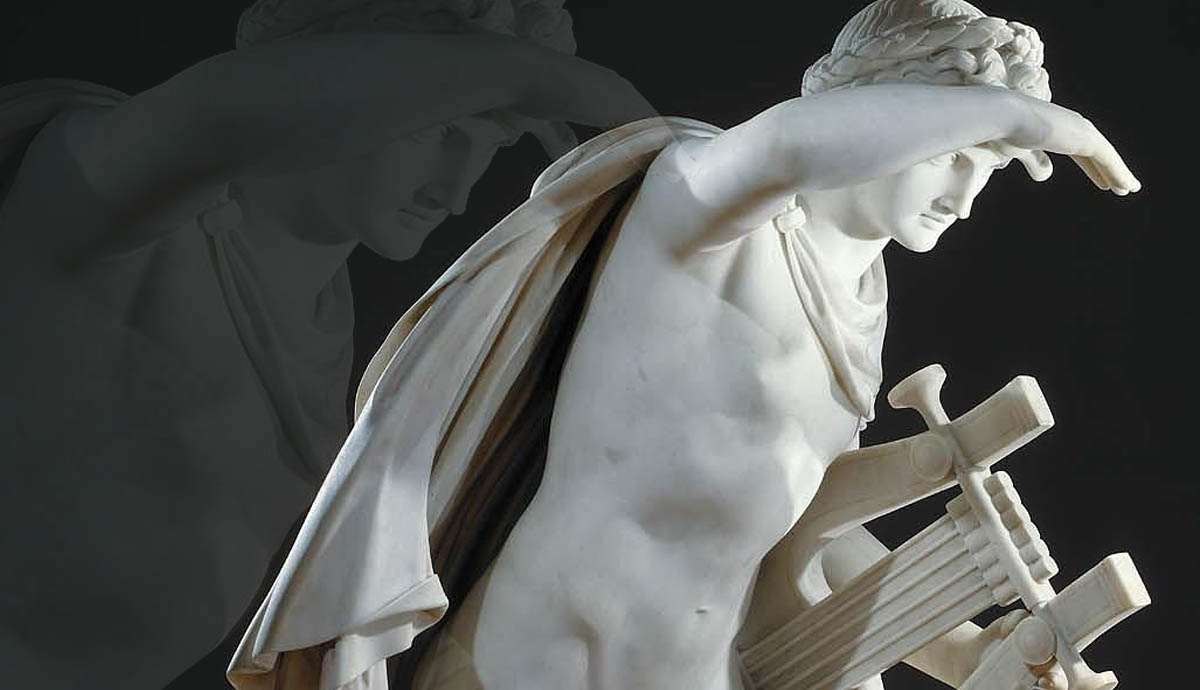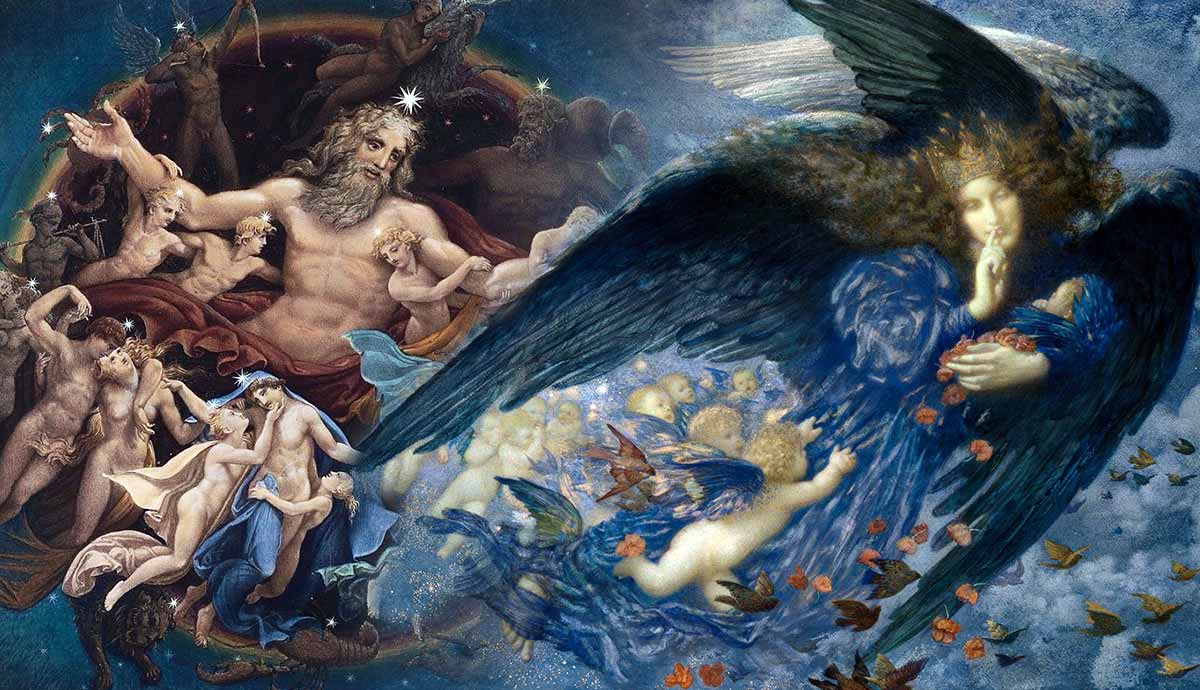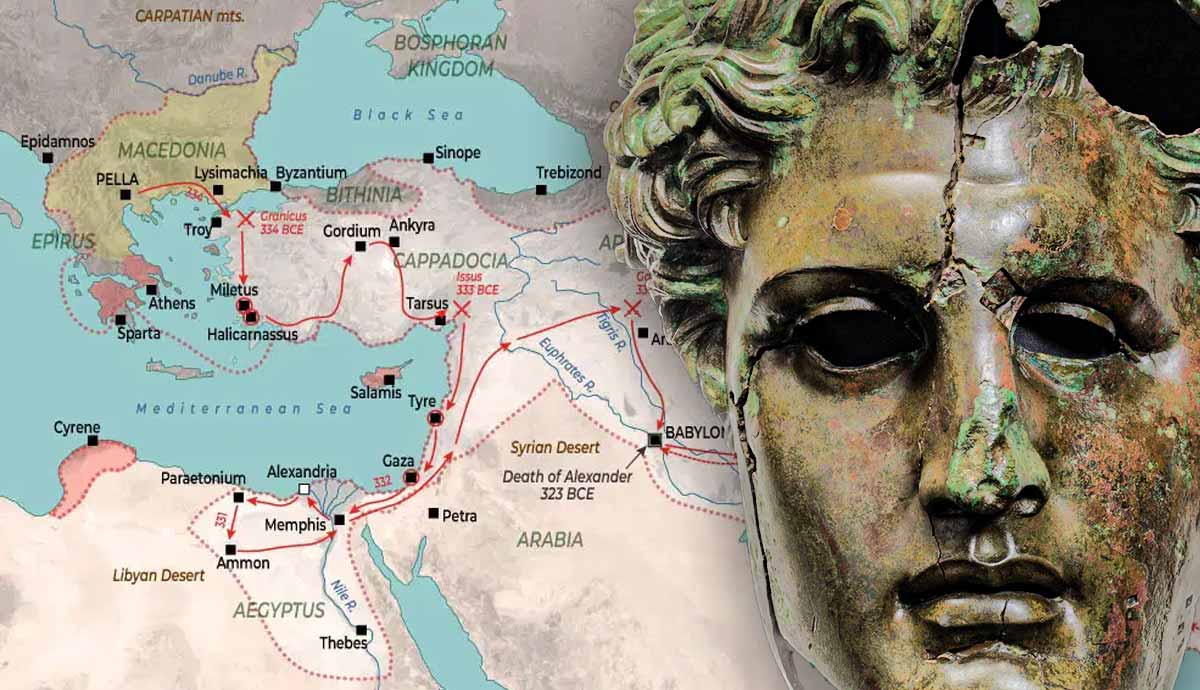
In Greek mythology, bad things happen to people when they look at something they shouldn’t. Actaeon, Orpheus, and Medusa: these three myths all contain the forbidden — and deadly — look. The interpretations behind these myths often relay societal warnings; Medusa and the power of female persuasion, Orpheus and the pitfalls of doubt, and finally Actaeon and the punishment for voyeurism. In each myth, the case is different.
When you are told “don’t look!”, aren’t you tempted? These mythical figures are no different.
Medusa

Medusa’s most recognized myth is the legend of the Greek hero Perseus, in which he decapitates Medusa and uses her head to turn his enemies to stone. There are two origin stories prior to her encounter with Perseus.
The first version of Medusa’s origin is that Medusa is simply another monster, born from a line of monsters. Pseudo-Hyginus, a roman mythographer from the 2nd century CE, wrote that “from Gorgon and Ceto [were born]: Sthenno, Euryale, Medusa.”
The second version depicts Medusa as a beautiful mortal woman. Medusa was a priestess of the temple of Athena. Since Athena was a maiden goddess, her priestesses took vows of chastity while they served her. However, the sea god Poseidon desired Medusa and so he raped her in the temple. In other versions, Medusa was a willing participant who took part in an illicit love affair with the sea god. Either way, her vow was broken.
Ovid writes, “The bashful Goddess turn’d her eyes away,
Nor durst such bold impurity survey;
But on the ravish’d virgin vengeance takes,
Her shining hair is chang’d to hissing snakes.”
And so, because Medusa’s vow was broken, she was cursed so that she would never be desirable again. Athena transformed her golden curls into slithering snakes, and cursed her with such a hideous face that any onlooker would turn to stone. No longer could she lock gazes with another, lest they would turn to stone.
There are multiple ways that Medusa’s petrifying gaze can be perceived…
Medusa’s Gaze: What’s the Meaning?

An initial theory is that Medusa’s curse was a warning for ancient Greek men to beware the dangers of womankind. To look upon a woman and be enthralled completely was to condemn oneself to “death” — symbolised by turning to stone.
This viewpoint originates from the old misogynistic views of ancient Greek society. Women were perceived to be treacherous and cunning. For example, Hesiod warns against women in his Works and Days, “Do not let a flaunting woman coax and cozen and deceive you: she is after your barn. The man who trusts womankind trusts deceivers.”
Equally, the Medusa myth is a warning to women and young girls to not be tempted by the advances of a man. As Medusa was deceived and exploited, she suffered — perhaps unfair — consequences. Perhaps this ancient Greek myth warns of the dangers of the lustful gaze.

Another interpretation is that Medusa is an “apotropaic symbol used to protect from and ward off the negative, much like the modern evil eye. She represents a dangerous threat meant to deter other dangerous threats, an image of evil to repel evil.” (MET Museum, Medusa in Art)
Medusa’s name means “guardian” in ancient Greek, and so her gaze offers protection. Artwork of Medusa’s head is found in many places — floor mosaics, on chariot wheels, decorative busts, above doorways, etc. Her presence suggests a cultural understanding of Medusa’s gaze as a protective ward.
In Greek myth, Athena’s breastplate (or, depending on the version, her shield) has the head of Medusa fixed to it: this is at once a powerful image that strikes fear into the enemy, and also a warning of the wrath of the goddess. As Athena assumes the image of Medusa’s curse, she warns of the dangers of looking at the alluring, as it can lead to destructive consequences.
Actaeon

Actaeon was a skilled huntsman, such that he was often compared with Artemis, the goddess of the hunt. He was raised by Chiron in the wild, and he nurtured fifty hunting dogs. In some versions of the myth, Actaeon revered the goddess Artemis so much that he wanted to marry her. However, this was impossible: Artemis had sworn off the company of men for life and taken an eternal vow of chastity. In other versions, Actaeon saw himself as the better hunter and had great pride in his skill.
This did not stop Actaeon’s infatuation with Artemis. According to Diodorus Siculus, a Greek historian from the 1st century BCE, “[Actaeon] presuming upon his dedication to Artemis of the first-fruits of his hunting, he purposed to consummate the marriage with Artemis at the temple of the goddess, but according to others, it was because he represented himself as superior to Artemis in skill as a hunter.” (Library of History 4.81.3–5)
One day when traveling in the forest, Actaeon came to rest near a peaceful spring. When he awoke, he saw Artemis bathing in the spring. Decency would have made Actaeon turn away, but he did not. When the goddess spotted him, she was infuriated.
Pseudo-Hyginus records the story in his Fabulae (180): “Actaeon, son of Aristaeus and Autonoe, a shepherd, saw Diana [Artemis] bathing and desired to ravish her. Angry at this, Diana [Artemis] made horns grow on his head, and he was devoured by his own dogs.”
In response to his voyeuristic gaze, Artemis transformed Actaeon into a stag, the very animal that his own dogs had been trained to hunt. As a result, he was torn apart by his own fifty dogs.
Actaeon’s Voyeurism: What’s the Meaning?

In Greek myth, Artemis is often the goddess that provides sanctuary for women: she protects women from rape, and rescues fleeing women. Therefore, Actaeon’s intrusive gaze on Artemis and her companions’ bathing scene is interpreted as a violation of female vulnerability. Actaeon’s potential dishonorable intentions threaten Artemis’ protective symbolism. As such, Actaeon’s gaze indicates human irreverence.
If we consider the imagery of the hunt — Actaeon as a skilled hunter and Artemis as the goddess of the hunt — another interpretation of Actaeon’s gaze is the tension between the hunters. Hunting is widely associated with the “thrill of the chase”. Actaeon’s impious pursuit of Artemis effectively places them in the stereotypical dynamic of the male hunter pursuing the female prey.
However, Artemis’ power reverses the situation — she is the very embodiment of the hunt. As such, Artemis’ transformation of Actaeon into a stag indicates an ownership of her status by effectively dominating Actaeon into the opposite dynamic: she the huntress and Actaeon the prey. The hunter becomes the hunted. By turning Actaeon into one of her very own symbols — the stag — Artemis demonstrates her protective power over the female by subsuming him into her power.
On the other hand, there is another interpretation that Actaeon’s glimpse of Artemis was purely accidental. In this view, could Artemis’ reaction be unjustified? Nevertheless, the reaction demonstrates how the naïve individual can stumble across dangerous consequences.
One theory from Terence Dawson is that “Actaeon coming on Artemis unawares therefore symbolizes a man’s unwitting discovery of sexuality “within” an image of virgin purity.” Consequently, the wandering gaze of Actaeon symbolizes the potential dangers of human curiosity. Despite the unintentional find, the individual must inevitably face the cost.
Orpheus

The tragic myth of Orpheus truly exemplifies the warning against looking when you shouldn’t.
The myth begins with a happy marriage of the two lovers Orpheus and Eurydice. However, while running through the forest together, a snake sinks its fangs into Eurydice’s ankle. The poison was fatal, and so she died and Orpheus was incredibly heartbroken.
Determined to bring her back to life, Orpheus adventured into the Underworld. He intended to persuade the god Pluto and the goddess Persephone, who ruled the domain, to return his love to life.
On his journey, Orpheus played the sweetest and most mournful melodies that he brought iron tears to the eyes of stone-hearted Pluto. The King and Queen of the Underworld were so moved by Orpheus’ performance that they agreed to let him take his wife back to the land of the living — but with one condition.
Ovid, in his Metamorphoses, retells the myth, “So Orpheus then received his wife; and Pluto told him he might now ascend […] up to the light, with his Eurydice; but, if he turned his eyes to look at her, the gift of her delivery would be lost.”
And so, Orpheus began his journey back, with his wife following closely. The flame of hope began to burn in Orpheus, but anxiety dampened the glow. Right at the last moment, with happiness on the horizon…
“When in fear he might again lose her, and anxious for another look at her, he turned his eyes so he could gaze upon her. Instantly she slipped away. He stretched out to her his despairing arms, eager to rescue her, or feel her form, but could hold nothing save the yielding air.”
Orpheus’ Glance: What’s the Meaning?

The most common interpretation of the Orpheus myth is quite straightforward: death is inevitable and irreversible. By trying to revive Eurydice, Orpheus’s actions go against the natural order of things. Therefore, the myth is a heart-breaking reminder that everything must return to the natural order. And so, Orpheus’ momentary glance back is the symbol of unescapable mortality. Orpheus must look back because Eurydice must remain dead.
Another interpretation is that Orpheus’ glance back illustrates the human experience of doubt. On the long winding road out of Hades, Orpheus becomes increasingly anxious — had Pluto tricked him? Was Eurydice safe behind him? (The Underworld was a dangerous place…) Was she still following? The long journey out of the darkness tormented Orpheus’ mind. The effect on his psychology in turn had an effect on Orpheus’ faith, and so he fell victim to his very human condition: doubt.
The myth can also be a warning of impatience. Orpheus was so, so eager reunite with Eurydice that he forgot Pluto’s command. This could show the cultural view that you should not doubt the word of a god, or that a god’s promise is binding. Equally, this invokes the ancient Greek theme of hubris. Orpheus’ pride led him to believe that he could reverse death, and so the god Pluto gives Orpheus a condition that poignantly highlights this very pride, and consequently Orpheus fails his mission because of this flaw.
Furthermore, as much as the story highlights the power of Orpheus’ love for Eurydice, it equally highlights the danger of overwhelming, blinding passion. Love made Orpheus turn back, and so he was never able to move on from Eurydice’s double death.
Medusa, Actaeon, and Orpheus: What Do They Tell Us?

Finally, what do these myths — Medusa, Actaeon, and Orpheus — tell us? Most starkly, they remind us of our human condition. Temptation, curiosity, and doubt; these are inherently human qualities. Humankind has not changed. The warning “don’t look!” and the itching response to look is a well-known phenomenon in life today. So, do these mythical stories have a timeless and universal warning for us today? You might just be more wary of taking that sneak peek next time.










